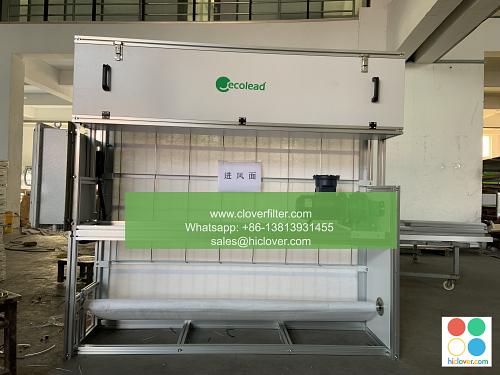A Guide to Choosing the Right Air Filter Paper for Your Needs

Choosing the right air filter paper is crucial for maintaining good indoor air quality, reducing dust and pollen, and preventing airborne diseases. With numerous types of air filter papers available in the market, selecting the most suitable one can be overwhelming. In this article, we will provide a detailed guide on how to choose the right air filter paper for your specific needs, highlighting various application areas and key considerations.
Understanding Air Filter Paper Types
Air filter papers are designed to capture airborne particles, including dust, pollen, smoke, and other contaminants. The most common types of air filter papers include:
* HEPA (High Efficiency Particulate Air) filter paper: Captures 99.97% of particles as small as 0.3 microns, making it ideal for allergy sufferers and asthma patients.
* Activated carbon filter paper: Effective in removing odors, gases, and chemicals from the air, commonly used in kitchen vents and industrial applications.
* Pleated filter paper: Offers a larger surface area, allowing for better airflow and particle capture, suitable for residential and commercial use.
* Electrostatic filter paper: Attracts and traps particles using electrostatic charges, often used in air purifiers and HVAC systems.
Application Areas and Key Considerations
When selecting an air filter paper, it’s essential to consider the specific application area and key factors that affect performance. Some of the critical application areas include:
* Residential air filtration: Consider family size, pet ownership, and allergy concerns when choosing a filter paper.
* Commercial air filtration: Take into account occupant density, air quality regulations, and equipment maintenance requirements.
* Industrial air filtration: Factor in process emissions, worker safety, and equipment protection when selecting a filter paper.
Some key considerations to keep in mind include:
* Filter efficiency: Look for filter papers with high MERV (Minimum Efficiency Reporting Value) ratings for better particle capture.
* Airflow resistance: Choose filter papers that balance filter efficiency with low airflow resistance to minimize energy consumption.
* Durability and maintenance: Consider filter papers with long lifespans and easy maintenance requirements to reduce operational costs.
Additional Tips and Recommendations
To ensure optimal performance and longevity of your air filter paper, follow these additional tips:
* Regular maintenance: Replace filter papers as recommended by the manufacturer to maintain air quality and equipment efficiency.
* Proper installation: Ensure filter papers are installed correctly to prevent air leaks and reduced performance.
* Compatibility: Verify that the filter paper is compatible with your air filtration system or equipment to avoid performance issues.
By considering these factors and application areas, you can choose the right air filter paper for your specific needs, ensuring a healthier indoor environment and reduced maintenance costs. Remember to always follow the manufacturer’s recommendations and guidelines for optimal performance and longevity of your air filter paper. You haven’t provided a prompt or question for me to respond to. Please provide more context or information so I can assist you. What would you like to talk about or ask?

